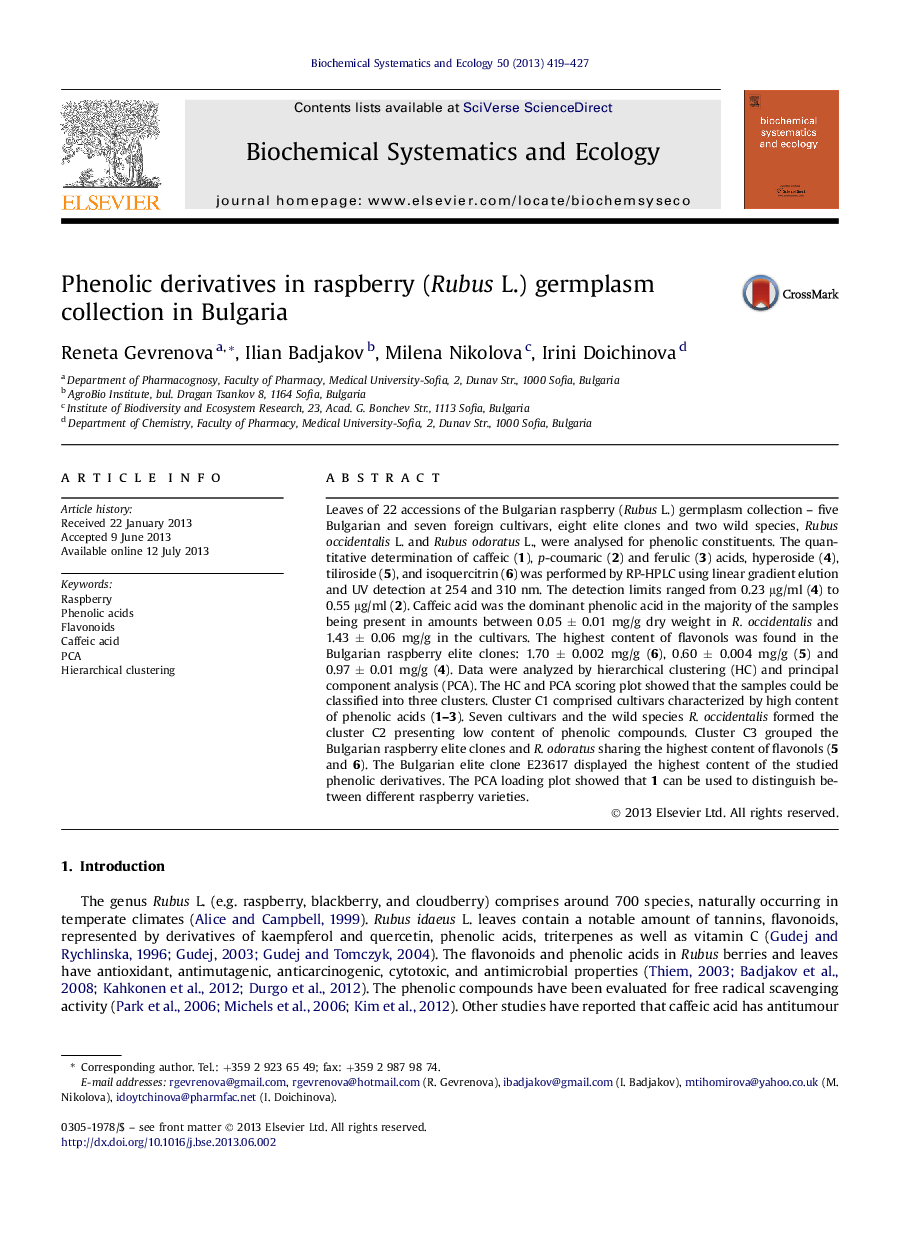| Article ID | Journal | Published Year | Pages | File Type |
|---|---|---|---|---|
| 7769480 | Biochemical Systematics and Ecology | 2013 | 9 Pages |
Abstract
Leaves of 22 accessions of the Bulgarian raspberry (Rubus L.) germplasm collection - five Bulgarian and seven foreign cultivars, eight elite clones and two wild species, Rubus occidentalis L. and Rubus odoratus L., were analysed for phenolic constituents. The quantitative determination of caffeic (1), p-coumaric (2) and ferulic (3) acids, hyperoside (4), tiliroside (5), and isoquercitrin (6) was performed by RP-HPLC using linear gradient elution and UV detection at 254 and 310 nm. The detection limits ranged from 0.23 μg/ml (4) to 0.55 μg/ml (2). Caffeic acid was the dominant phenolic acid in the majority of the samples being present in amounts between 0.05 ± 0.01 mg/g dry weight in R. occidentalis and 1.43 ± 0.06 mg/g in the cultivars. The highest content of flavonols was found in the Bulgarian raspberry elite clones: 1.70 ± 0.002 mg/g (6), 0.60 ± 0.004 mg/g (5) and 0.97 ± 0.01 mg/g (4). Data were analyzed by hierarchical clustering (HC) and principal component analysis (PCA). The HC and PCA scoring plot showed that the samples could be classified into three clusters. Cluster C1 comprised cultivars characterized by high content of phenolic acids (1-3). Seven cultivars and the wild species R. occidentalis formed the cluster C2 presenting low content of phenolic compounds. Cluster C3 grouped the Bulgarian raspberry elite clones and R. odoratus sharing the highest content of flavonols (5 and 6). The Bulgarian elite clone E23617 displayed the highest content of the studied phenolic derivatives. The PCA loading plot showed that 1 can be used to distinguish between different raspberry varieties.
Related Topics
Physical Sciences and Engineering
Chemistry
Organic Chemistry
Authors
Reneta Gevrenova, Ilian Badjakov, Milena Nikolova, Irini Doichinova,
